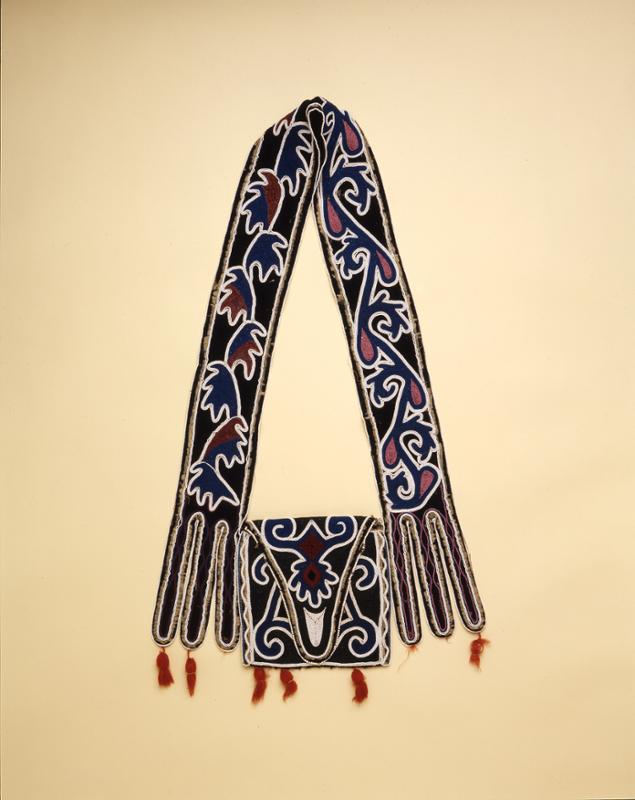
Museum Object Number: NA 5861

Museum Object Number: 2002-9-2
Since 1998, the American Section of the University of Pennsylvania Museum has been involved with the National Museum of the American Indian’s Native Artist Fellowship Program. Those native artists selected for the program travel to the east coast to research museum collections in New York, Philadelphia, and Washington, DC The University of Pennsylvania Museum has hosted twenty-one artists since its involvement with this program, ranging from those who work in very traditional media, such as beadwork, basketry and weaving, to those artists working as painters, printmakers, and sculptors.
One of our visiting fellows was Choctaw artist, Jerry Ingram. Ingram studied commercial art at both the Institute of American Indian Art in Santa Fe and Oklahoma State Tech, graduating from the latter in 1966. His paintings have been included in exhibitions at the Philbrook Art Center, Tulsa; the Bowers Museum, Santa Ana; and the Heard Museum, Phoenix. His interest in beadwork and quillwork grew directly from his painting. Ingram shared, “I am self-taught in beadwork and quillwork. During the 1960s and 1970s, while I was working in commercial art, I did a variety of paintings with Indians as the subject matter. In order to insure accuracy in my portrayals, I began to teach myself beadwork and quillwork, making replicas of historic beadwork, dressing models in them and painting from them. After many years of making beadwork and quillwork for my own use, I began to display and sell the work, along with my paintings. I have not done any paintings in the last three years but continue to do beadwork and quillwork.”
Ingram’s participation as an Artist/Fellow allowed him the opportunity to examine historic examples of Southeastern beadwork, and incorporate techniques and designs into his own work. Upon visiting our collections, the first bag he saw was the Shawnee Bandolier Bag shown here. It was an exciting moment for him because it further confirmed the historic continuity he has executed in his own work.
With the support of UPM’s director, Dr. Jeremy Sabloff, the American Section has had the opportunity to selectively purchase examples of visiting artists’ work. In 2002, we purchased two beaded shoulder bags from Jerry Ingram for our collection. Both took first place awards (1995, 2001) at Indian Market in Santa Fe and are fine examples of the beadwork traditions of the Southeastern peoples. Ingram’s earlier bag, with its bold, abstract designs and limited color palette, is based on historic bags that have been identified as Creek/Seminole (see p. 27 in this issue). His more recent bag, shown here, with its more naturalistic floral and foliate forms, is in the stylistic tradition of bags identified as Creek or Cherokee. The addition of these two contemporary bags to our collection complements our earlier, 19th century bandolier bag and visually demonstrates the power of those beadwork traditions.
William Wierzbowski is assistant keeper of the American Section.
